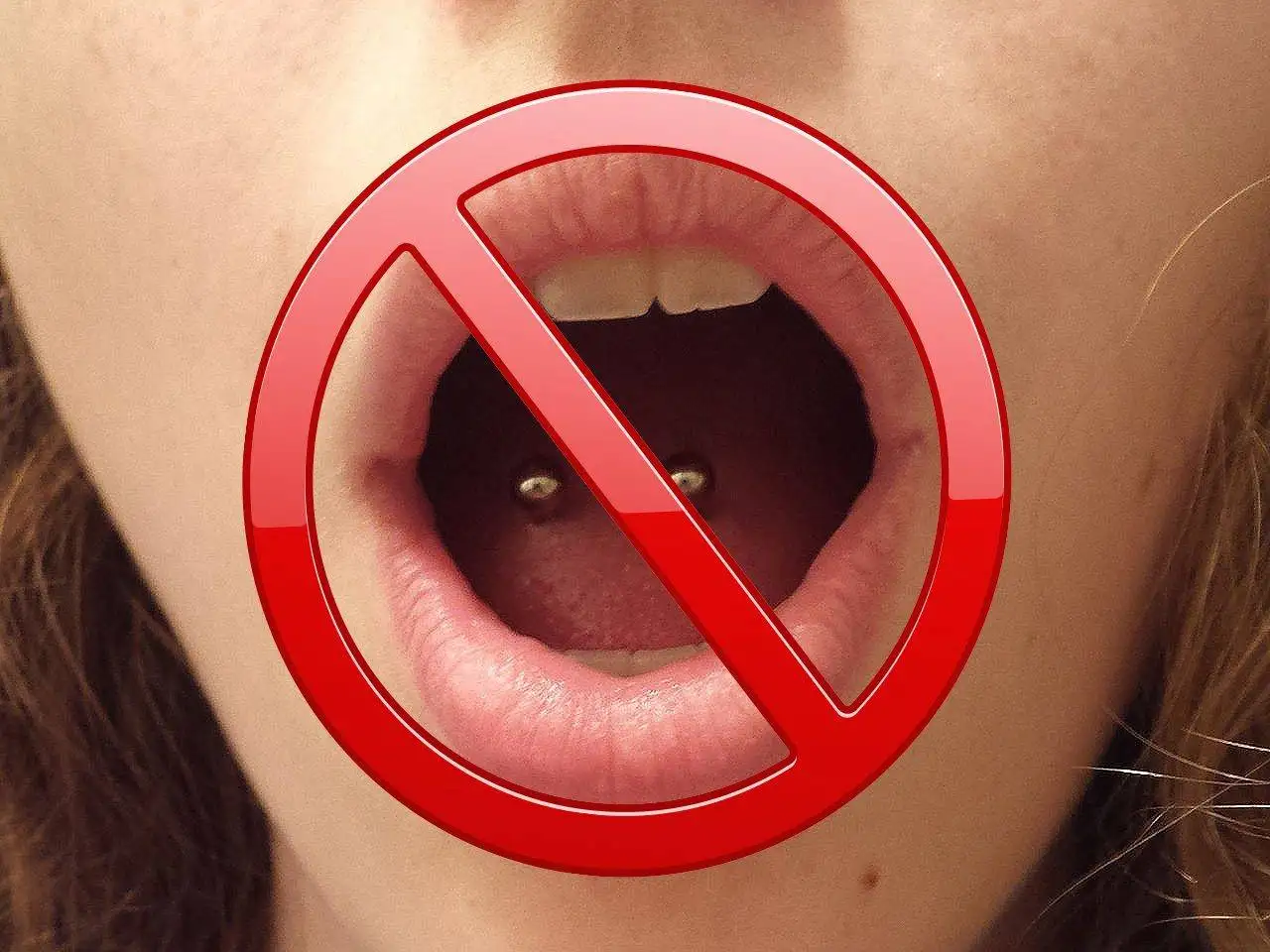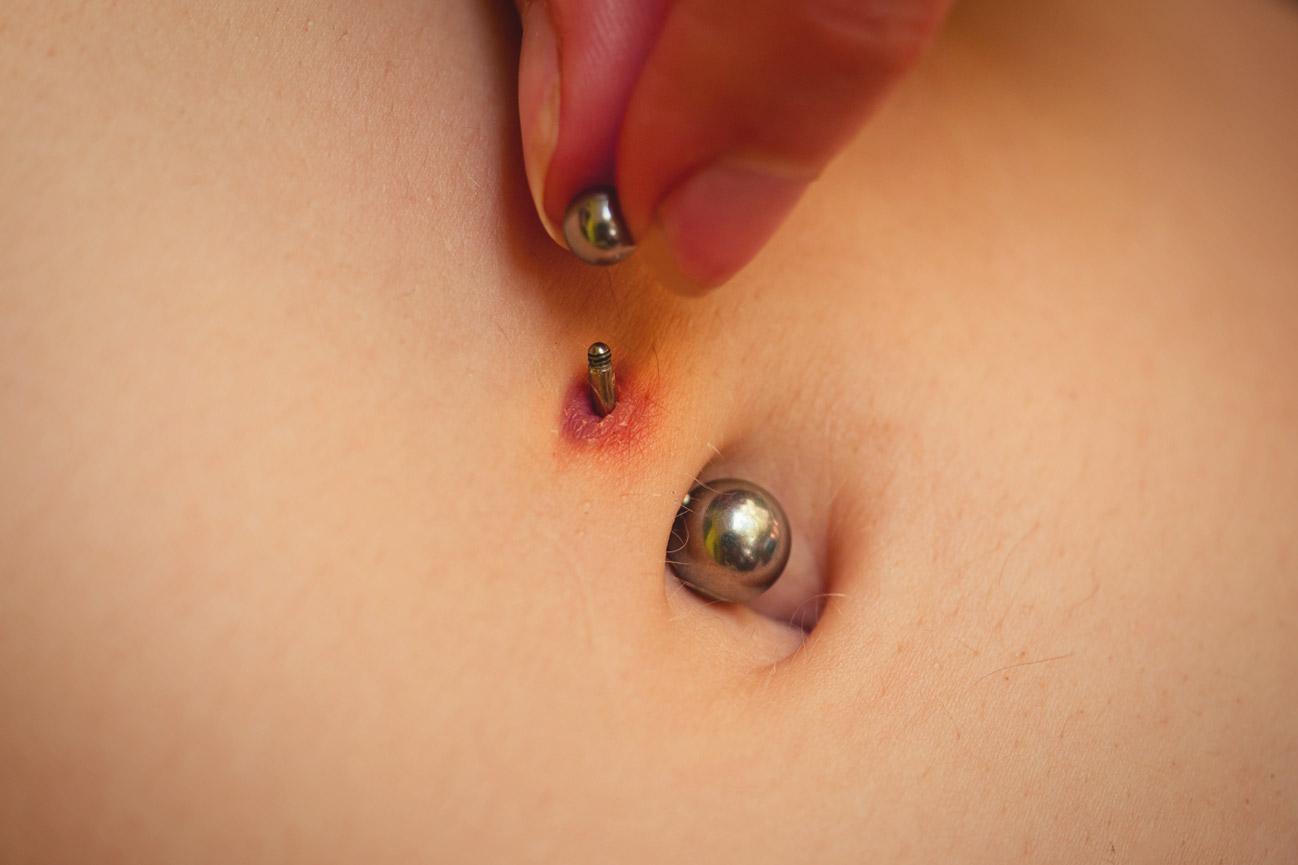Hello and welcome to our in-depth exploration of horizontal tongue piercings. In this guide, we’ll thoroughly explore the risks and safer alternatives associated with this potentially menacing piercing style. While these piercings might appear to look badass, they come with their fair share of risks. We are going to navigate the intricacies of horizontal tongue piercings, learning the different variations of this piercing, and explain why vertical tongue piercings are the safer route. Let’s get you nice and informed so you can rock a tongue piercing without putting your health on the line.
Understanding Horizontal Tongue Piercings
Horizontal tongue piercings, often referred to as snake eye piercings, are a unique form of body modification. Unlike traditional tongue piercings, which go vertically through the tongue, horizontal piercings enter through the sides, typically near the tip of the tongue. This distinctive placement creates the appearance of two separate beads or balls sitting on either side of the tongue, resembling snake eyes—hence the name.
The Risks Associated with Horizontal Tongue Piercings
Damage to Teeth and Gums: One of the most significant concerns with horizontal tongue piercings is the potential for damage to teeth and gums. The metal beads or balls can rub against teeth, leading to enamel erosion, chipping, or even fractures. Gums can also suffer as the jewelry constantly presses against them, causing recession and discomfort.
Speech and Chewing Difficulties: The presence of metal beads or balls on either side of the tongue can interfere with proper tongue movement, affecting speech and chewing. Some individuals find it challenging to articulate words clearly or comfortably consume certain foods.
Infection and Swelling: Like any piercing, horizontal tongue piercings carry the risk of infection. The mouth hosts a variety of bacteria, and introducing a foreign object can disrupt the delicate oral balance. Additionally, swelling is a common side effect after any tongue piercing, and with horizontal piercings, it can be more pronounced due to the location.
Increased Risk of Jewelry Migration: The unique placement of horizontal tongue piercings makes them susceptible to jewelry migration, where the jewelry moves within the piercing channel over time. This can result in discomfort, irritation, and even the need for corrective procedures.
The Safer Alternatives: Vertical Tongue Piercings
Now, let’s take a closer look at the safer alternative, vertical or midline tongue piercings – a more secure choice for those that want a tongue piercing without all the associated risks. Vertical tongue piercings present several distinctive advantages that make it the preferred option for piercers and safety-conscious individuals alike.
Avoiding Complex Tongue Musculature: The human tongue is a complex muscular organ with intricate muscle fibers running vertically from the base to the tip. Vertical tongue piercings, which pass through these muscle fibers, avoid critical horizontal nerve pathways and major blood vessels. This minimizes the risk of nerve damage and excessive bleeding during the piercing process.
Minimizing Dental Interaction: Unlike horizontal piercings, which can pose a considerable risk of dental damage, vertical/midline tongue piercings are strategically positioned to minimize contact with teeth and gums. This placement significantly reduces the chances of chipped teeth, enamel wear, or gum recession – common issues associated with horizontal piercings.
Enhanced Healing and Comfort: The vertical placement allows for better circulation around the piercing site, which promotes faster healing and minimizes the risk of infection. Additionally, vertical tongue piercings are less likely to interfere with everyday activities like speaking and chewing, enhancing comfort throughout the healing process and beyond.
Piercing Expertise and Ethical Practices: Reputable piercing studios and professionals prioritize safety and ethical practices. Recognizing the well-documented risks of horizontal tongue piercings, many of these experts choose to refrain from offering such placements. Instead, they recommend the safer and scientifically sound vertical/midline tongue piercing option to clients who want to minimize potential complications.
In summary, the science behind the preference for vertical tongue piercings, particularly the vertical/midline style, lies in its ability to navigate the complexities of the tongue’s musculature while minimizing dental interactions and promoting efficient healing. The strategic placement aligns with piercing expertise and ethical practices, contributing to a safer and more secure piercing experience, plus the choice to have a healthy well healed piercing will last for years to come. Remember a valuable piece of advice, choose a reputable studio with well trained professionals that put your health above everything else.
Final thoughts
While horizontal tongue piercings may hold a unique appeal, they also come with a set of risks that should not be taken lightly. Understanding these potential complications is crucial for making an informed decision about body modification. Safer alternatives exist, such as vertical tongue piercings, that allow individuals to express themselves without endangering their oral health and overall well-being. So, prioritize safety and health when choosing your piercings. After all, looking cool should never come at the expense of your well-being.






